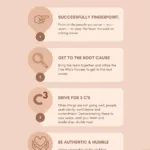Learning from Failure
Last updated on May 14th, 2023 at 01:00 pm
Four ways product managers can lead when bad things happen

With technology moving faster than ever, failure is not only unavoidable, it’s inevitable. A system outage or a product that fails to meet quality or specifications is not only business-damaging, but also personally demoralizing. How you learn from failure, and even how you lead in failure is how you grow.
As a product leader, you painstakingly seek to understand the value of potential features or products for users. You build a business case, get buy-in, develop requirements and forecasts and tell sales teams and users how GREAT the new product is going to be. In your mind, you’ve developed the Ferrari of software that will truly improve lives. And if your beautifully designed digital Ferrari doesn’t start? A whole lot of people start asking why you didn’t plan better.
So how do you get that car started again? Well, that all depends on how you – and your company – learn from failure. The tips below will not only help you quickly get back on the road, they’ll also help you improve your relationships with users, stakeholders and other teams.
Successfully Finger-Point.
When something goes wrong with a product release or a critical outage occurs, do yourself a favor: Take a time out. It’s not about you. Really, I promise. It’s about your customers, your partners, your users. So if you must point the finger, point it at the people you’re trying to serve—your users.
To be clear: This does NOT mean you’re blaming your customers for a problematic deployment. Completely the opposite. It means your team needs to know you care more about keeping everyone focused on the users, and ensuring they have a good experience, rather than placing blame. If team members are worrying about where the blame is going to fall, you won’t get their best efforts. Let them know you have their back and will provide air cover and communications support while they work through the issue.
This is easier said than done, especially if the finger is pointed at you from other leaders in your company. All of us can point to times when we’ve moved to a bad place under stress. If this happens, recover quickly. Refocus the team on the challenge, apologize if necessary and show with your actions that you will support the team.

Get to the root cause as quickly as possible.
Toyota Motor Corporation’s Five Whys technique is an efficient way to learn from failure and uncover the root cause of problems and help teams solve problems quickly. Often, the presenting problem is the symptom and not the disease, and teams can get stuck if they focus on the symptoms.
To get to the root of the problem, assemble a cross-functional team — fast. Involve key people from across the organization and ensure your customer support teams are represented and involved. They are on the frontlines and understand what is happening with your users and how they’re feeling.
It’s easy to try it out yourself. All you really need is a curious open mind and a whiteboard. In case you’d like a tool to help you get jumpstarted, check out my printable cheatsheet.
Drive for 3 C’s: Clarity, Communication and Confidence.
Commit to brief, daily cross-functional meetings throughout a crisis to keep the lines of communication open, allow new issues to be raised and report resolutions of existing issues. Drive for clarity to ensure all attendees are on the same page. Communicate the team’s progress to stakeholders, and demonstrate confidence and trust in your team members to resolve the issue.
The way you communicate in meetings like these are important. Remembering the rule of not placing blame, but also knowing that you need to hold people accountable. Subtle language choices make all the difference. Asking, “Joe, do you think you might be able to figure out why the script is failing?” is very different than, “Joe, what time tomorrow will you have a resolution for the script failure?”
Understand your users are confused and frustrated. In our organization, our 120,000 independent Consultants use our systems daily. Outages or feature failures limit or stop their efficiency and sales, so system issues can escalate to a frenzy quickly — and publicly — via social media. Users need to hear from you, so step in early, be transparent about what you know and if you have a known user base, use personal presence to increase confidence.
During an outage at a past employer, our CEO and President quickly got on Facebook Live and reassured our users that though we are not always perfect, we always make it right. They detailed specifically how we were handling issues arising from the outage, and they paved the way for our teams to communicate more detailed information through both formal and informal channels.
Move on, be authentic and humble and…don’t make the same mistake twice.
A critical failure or outage can impact a team’s confidence. Remember: you hired smart people who want to do good work. To avoid repeating the same mistake, learn from failure, but ensure that the team moves on, a retrospective occurs and processes get revised as necessary. Restoring trust among stakeholders and users depends on how well you apply the lessons you learned.
Yes, an outage or system failure can cause a dip in trust with your users. But you can overcome it by being authentic, owning the issues without glossing them over and correcting the problem. You – and your product – will live to fight another day.








